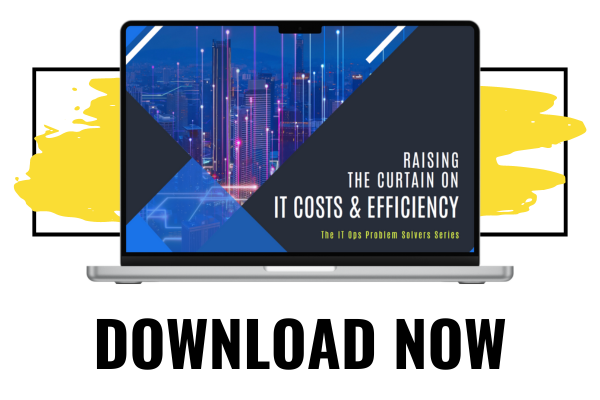IT Ops Problem Solver Series – Part 1
This article summarizes the first full report on our new IT Ops Problem Solver Series. In this series, we’ll tackle the biggest problems facing IT Ops leaders and explore how some of Galileo’s clients are addressing them.
When trying to improve efficiency without negatively impacting operational performance, almost every IT Ops leader faces a significant challenge in understanding the detailed operational costs that impact this balancing act. Yet, this detailed visibility and transparency is necessary across a whole set of situations, including:
- Outsourcing negotiations
- Oversight and governance of outsourced providers
- Preparing for migrations to the cloud
- Managing cloud operations
- Enabling IT chargebacks
- Routine management and improvement of IT operational efficiency
While cost visibility and transparency sound simple, the complexity of the modern, hybrid technology stack — spread across everything from legacy architectures to modern cloud environments — makes it almost impossible to create a single, unified view of your operational estate and its underlying cost components.
The good news is that Galileo‘s unique, operator-centric approach to operational management creates precisely this sort of cost visibility and transparency, enabling you to improve efficiency, manage migrations, and provide necessary oversight — all without putting operational performance at risk.

Complete the short form to access the full report.
IT Costs: A Trap and a Haze
IT operational cost visibility and transparency are a double-sided, two-stage trap that starts with the erroneous assumption that you already have them.
In this first stage, you are in a deluded state of bliss.
You don’t even know you have a problem, believing that knowing how much you paid for a given piece of infrastructure or that you know your unit cost of cloud consumption is enough.
Then it comes time to provide some oversight, or you need to renegotiate a contract, or you need to migrate a workload to the cloud, or you are asked to account for detailed costs by management.
Suddenly, it becomes clear that you don’t have nearly enough data to do the job. That’s when you hit the second stage of the trap: you realize just how hard it is to create a unified view that allows you to understand everything—your cost and performance across your entire stack—all at once.
Most organizations’ inability to collect and leverage meaningful cost and transparency data over time results in what we call Cost-Performance Haze.
This lack of visibility into the nuanced and complex relationship between operational cost and performance leaves IT ops leaders flying blind into a storm. More than anything, it leaves them unable to make the right decisions for their organization—precisely when those decisions matter the most.
Whether during a renegotiation, performing oversight and governance activities, executing a critical migration, or just executing management responsibilities, this lack of data at a critical juncture has real, quantifiable costs—in terms of dollars, operational risk, and reputation.
It’s a price you can’t afford to pay.
Why Creating IT Operational Cost Visibility & Transparency is Difficult
The old axiom, “If it was easy, everyone would be doing it,” applies here.
If the cost visibility and transparency gap is so costly, why aren’t vendors and enterprise organizations rushing to fix it? The reason is that it ain’t easy.
To do so requires a few essential elements that are tough to assemble. First, you need data — lots and lots of data.
You need data from across your stack.
You need it to be detailed.
And you need to be able to use it to correlate operational capacity, performance, and cost.
That also means that you need to understand that data in the context of time — and to be able to go back in time to understand these correlations in context.
Likewise, you need to understand which elements of the tech stack contribute to the performance and cost data you’re getting. To do all of that, you require deep, subject-matter expertise in architecting the data stream and making sense of it all.
Finally, you need a way to operationalize all of that data and the insights it generates by integrating them into detailed business workflows.
You can see why most vendors choose to give you a raw data feed and hope you can do something with it.
And that’s why most organizations never do.
The good news is that Galileo has helped its customers overcome the cost visibility and transparency trap and clear the cost-performance haze to create real value for their organizations.
Three Stories of Raising the Curtain on IT Costs, Performance, and Efficiency
While the cost visibility and transparency we’re describing are tough, a tool like Galileo can transform these challenges into opportunities.
In the full report, we describe how three leading North American enterprises leverage their Galileo implementations to do so and the results they’ve found.
Collecting and leveraging detailed, correlated data on IT operational cost and performance is an underutilized capability that can change the game for IT ops leaders.
By leveraging a tool like Galileo, you can create a distinct advantage for your organization by raising the curtain that leaves you flying blind and transforming your operational data into a strategic asset.
Download the full report for more details and in-the-trenches stories of how Galileo’s customers solved these issues.





